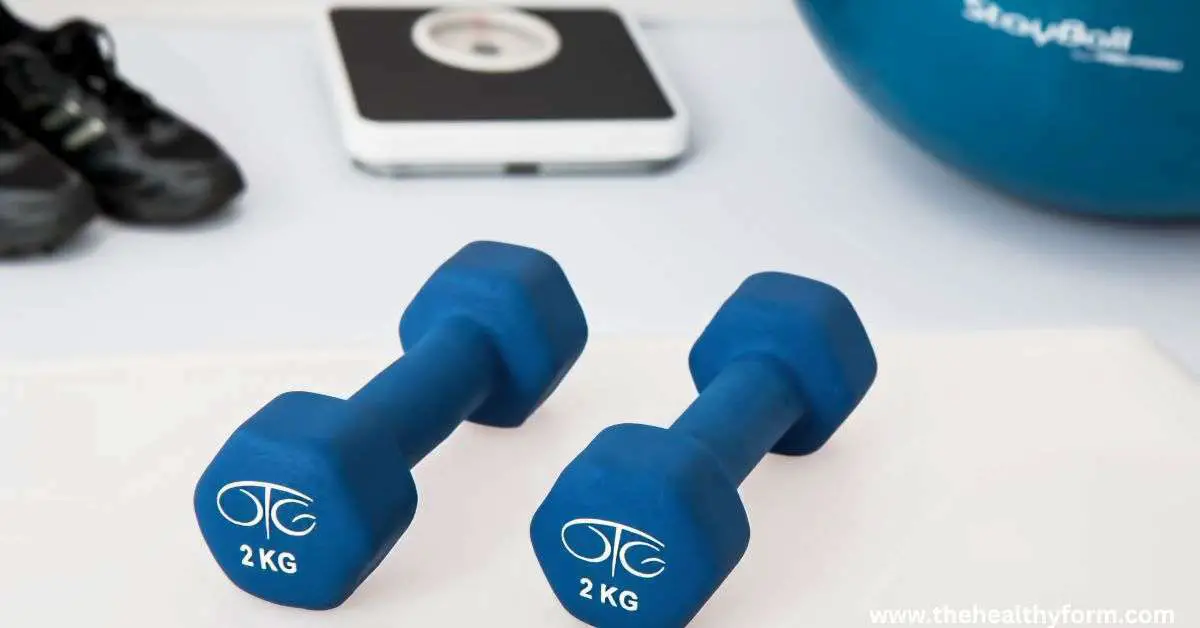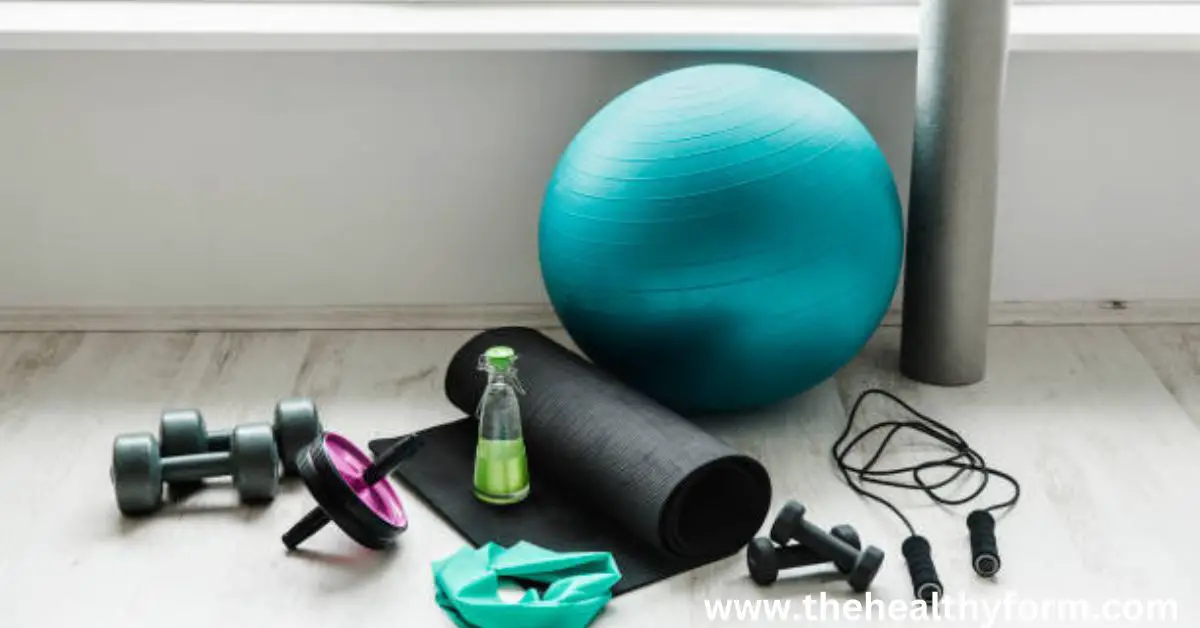How to Create an Effective Workout Plan?
How to create an effective workout plan can be the key to achieving your fitness goals and leading a healthy, active lifestyle. Whether you want to lose weight, build muscle, improve cardiovascular endurance, or feel better overall, an effective workout plan can help.
In this article, we will explore the key elements of a successful workout plan, how to create a workout plan that is tailored to your goals, the best workouts for weight loss, how to vary your workouts to prevent boredom and improve results, the best workouts for building muscle and strength, how to create a workout plan that fits your schedule and lifestyle, the best workouts for improving cardiovascular endurance, how to create a balanced workout plan that includes strength, cardio, and flexibility, the best workouts for improving flexibility and mobility, and how to track your progress and adjust your workout plan accordingly.
So, let’s dive in and learn how to create an effective workout plan!
What are the Key Elements of a Successful Workout Plan?
A successful workout plan should be tailored to your goals, fitness level, and preferences. Here are a few key elements to consider when creating an effective workout plan:
- Specific goals: It’s important to remember specific goals when creating a workout plan. Whether you want to lose weight, build muscle, improve your cardiovascular endurance, or feel better overall, setting specific goals can help to keep you motivated and on track.
- Frequency: How often you work out depends on your goals and schedule. Aiming for at least 150 minutes of moderate-intensity or 75 minutes of vigorous weekly exercise is generally recommended.
- Intensity: The intensity of your workouts should be tailored to your fitness level and goals. High-intensity interval training (HIIT) can be effective for weight loss, while moderate-intensity lifting with heavier weights can benefit muscle building.
- Duration: Your workouts will depend on your goals and your schedule. Aiming for at least 30 minutes of exercise daily is recommended, but shorter, more intense workouts can also be effective.
- Variety: Mixing up your workouts can help to prevent boredom and improve results. Incorporating various activities, such as strength training, cardio, and flexibility work, can help keep your workouts interesting and effective.
How Can I Create a Workout Plan that is Tailored to My Goals?
It’s important to consider your specific goals, fitness level, and preferences to create a workout plan tailored to your goals. Here are a few tips for creating a customized workout plan:
- Determine your goals: What do you want to achieve with your workout plan? Whether it’s weight loss, muscle building, improved cardiovascular endurance, or something else, having specific goals in mind can help guide your workouts.
- Consider your fitness level: Choosing workouts that are appropriate for your fitness level is important. If you are new to exercise, gradually increasing intensity and duration over time is important.
- Make it enjoyable: Choose workouts that you enjoy, and that fit your lifestyle and schedule. If you hate running but love dancing, consider incorporating dancing into your workout plan rather than forcing yourself to run.
- Be consistent: Consistency is key to achieving your fitness goals. Try to stick to a regular workout schedule and make it a habit to incorporate physical activity into your daily routine.
- Adjust as needed: Don’t be afraid to adjust your workout plan. If a certain workout isn’t working for you, try something else. It’s important to listen to your body and adjust to meet your goals healthily and sustainably.

What are the Best Workouts for Weight Loss?
Many different workouts can be effective for weight loss, and the best workout for you will depend on your goals, fitness level, and preferences. Here are a few options to consider:
- High-intensity interval training (HIIT): HIIT involves short bursts of intense exercise followed by rest periods. This type of workout can be very effective for weight loss and can be done with various activities, such as running cycling, or bodyweight exercises.
- Strength training: Strength training can help boost metabolism and build lean muscle mass, benefit weight loss. Incorporating strength training into your workout plan can help to increase muscle mass and improve body composition.
- Cardio: Cardio workouts, such as running, cycling, or swimming, can help to burn calories and improve cardiovascular endurance. Incorporating regular cardio workouts into your routine can be a great way to support weight loss efforts.
- Yoga: Yoga can greatly improve flexibility, reduce stress, and support weight loss. Incorporating yoga into your workout plan can help to improve overall body awareness and support healthy habits.
How Can I Vary My Workouts to Prevent Boredom and Improve Results?
One of the keys to a successful workout plan is to keep things interesting and prevent boredom. Here are a few ways to vary your workouts and keep things fresh:
- Try new activities: Mixing up your workouts with new activities can be a great way to keep things interesting and prevent boredom. Try dancing, hiking, or martial arts to mix things up.
- Incorporate different types of workouts: Varying the workouts you do can help keep things interesting and prevent boredom. Consider incorporating strength training, cardio, and flexibility work into your routine to mix things up.
- Change your routine: Changing your routine can help prevent boredom and keep your workouts fresh. Consider trying different workouts at different times of the day or switching up the order of your workouts to keep things interesting.
- Work out with a partner: Working out with a partner can help to make workouts more enjoyable and prevent boredom. Consider finding a workout buddy to motivate and support you.
- Find ways to make workouts more enjoyable: Finally, find ways to make your workouts more enjoyable. Whether it’s listening to music, watching a TV show or movie, or finding a beautiful outdoor location to work out in, there are many ways to make workouts more enjoyable and prevent boredom.

What are the Best Workouts for Building Muscle and Strength?
Incorporating strength training into your workout plan is vital if your goal is to build muscle and strength. Here are a few options to consider:
- Resistance training: This training involves using weights, bands, or body weights to challenge and strengthen your muscles. Incorporating resistance training into your workout plan can help to improve muscle mass, strength, and overall body composition.
- Free weights: Free weights, such as dumbbells and barbells, can build muscle and strength. Incorporating squats, lunges, bench presses, and deadlifts into your routine can help target multiple muscle groups and improve overall strength.
- Machine weights: Such as those found in a gym or fitness center, can be a good option for those new to strength training or those looking to focus on specific muscle groups. Machines can be an excellent way to isolate specific muscles and allow precise weight and movement control.
- Bodyweight exercises: Bodyweight exercises, such as push-ups, squats, and lunges, can be a great way to build muscle and strength using only your body weight as resistance. These exercises can be done anywhere and are a convenient and effective way to build strength.
- Plyometrics: Plyometrics, also known as “jump training,” involves explosive, high-intensity movements that can help to build muscle and improve power and strength. Examples of plyometric exercises include box jumps, jump squats, and burpees.
How Can I Create a Workout Plan that Fits My Schedule and Lifestyle?
Creating a workout plan that fits your schedule and lifestyle is key to sticking to and achieving your fitness goals. Here are a few tips for creating a workout plan that works for you:
- Make time for workouts: It’s important to make time for workouts and prioritize physical activity in your schedule. Even if it’s just a few minutes a day, exercising can help improve your overall health and well-being.
- Be flexible: It’s okay to be flexible with your workout plan and adjust as needed. If you have a busy day and can’t fit in a long workout, try squeezing in a quick, intense workout or taking a leisurely walk instead.
- Find activities you enjoy: Choosing workouts can make it easier to stick to your plan and make exercise a part of your lifestyle. Consider finding activities that fit your interests and preferences, such as dancing, hiking, or swimming.
- Use available resources: Many resources are available to help you create a workout plan that fits your schedule and lifestyle. Online workout videos, apps, and fitness classes can be a convenient way to work out, even with a busy schedule.
- Don’t be afraid to ask for help: If you struggle to fit workouts into your schedule or create an effective plan, don’t hesitate to ask for help. A personal trainer or fitness coach can help you create a plan that works for you and your goals.
What are the Best Workouts for Improving Cardiovascular Endurance?
Improving cardiovascular endurance can help improve overall health and well-being, and many different workouts can be effective. Here are a few options to consider:
- Running: Running is a classic cardio workout that can help to improve cardiovascular endurance, burn calories, and improve overall health.
- Swimming: Swimming is a low-impact option that can improve cardiovascular endurance and overall fitness.
- Biking: Biking is a great way to improve cardiovascular endurance, burn calories, and enjoy the outdoors.
- HIIT: High-intensity interval training (HIIT) can be a very effective way to improve cardiovascular endurance and burn calories.
- Cardio machines: Cardio machines, such as treadmills, stationary bikes, and ellipticals, can be a convenient way to improve cardiovascular endurance. Many gyms and fitness centers have a variety of cardio machines available for use.
Choosing a cardio workout that you enjoy and fits your fitness level and goals is important. Regular cardio workouts can help improve cardiovascular endurance, burn calories, and overall health and well-being.

How Can I Create a Balanced Workout Plan That Includes Strength, Cardio, and Flexibility?
Creating a balanced workout plan that includes strength, cardio, and flexibility work can help to improve overall fitness and well-being. Here are a few tips for creating a balanced workout plan:
- Incorporate strength training: Incorporating strength training into your routine can help to improve muscle mass, strength, and body composition. Strength training can be done with free weights, machine weights, or bodyweight exercises.
- Add in cardio: Cardio workouts, such as running, cycling, or swimming, can help to improve cardiovascular endurance and burn calories. Aim for at least 150 minutes of moderate or 75 minutes of vigorous-intensity exercise per week.
- Don’t forget about flexibility: Incorporating flexibility work, such as yoga or static stretches, can help to improve flexibility, reduce the risk of injury, and improve overall body awareness.
- Find a balance: It’s important to balance strength, cardio, and flexibility in your routine. This can help ensure you target all aspects of your fitness and well-being.
- Be consistent: Consistency is key to creating a balanced workout plan. Regularly incorporate strength, cardio, and flexibility work for the best results.
What are the Best Workouts for Improving Flexibility and Mobility?
Improving flexibility and mobility can help to reduce the risk of injury, improve athletic performance, and improve overall well-being. Here are a few workouts to consider for improving flexibility and mobility:
- Yoga: Yoga can significantly improve flexibility, reduce stress, and improve overall body awareness.
- Pilates: Pilates is a form of exercise that improves flexibility, strength, and balance.
- Stretching: Static stretches, such as the forward fold or downward facing dog, can significantly improve flexibility and mobility.
- Foam rolling: Foam rolling is a form of self-massage that can help improve flexibility and reduce muscle soreness and overall mobility.
- Dynamic stretches: Dynamic stretches, such as leg swings or lunges, can help to improve flexibility and mobility more practically.
Incorporating flexibility and mobility work into your routine can help to improve overall body awareness, reduce the risk of injury, and improve athletic performance.
How Can I Track My Progress and Adjust My Workout Plan Accordingly?
Tracking your progress and adjusting your workout plan accordingly can help ensure you meet your fitness goals and progress. Here are a few tips for tracking your progress and adjusting your workout plan
- Keep a workout journal: Keeping a workout journal can be a helpful way to track your progress and see how far you have come. You can record the type of workout you did, the duration, intensity, and other relevant details.
- Use a fitness tracker: Fitness trackers, such as a smartwatch or fitness band, can be a convenient way to track your workouts and progress. Many fitness trackers can track steps, distance, heart rate, and other metrics to help you see how you are doing.
- Take progress photos: Progress photos can be a great way to see your progress over time. Consider taking photos at regular intervals, such as every month or every few months, to see how your body changes.
- Measure your progress: Besides taking photos, consider measuring your progress in other ways, such as tracking your weight, measuring your waistline, or testing your strength or endurance.
- Adjust as needed: Don’t be afraid to adjust your workout plan to ensure you meet your goals. If you are not seeing the progress you want, consider increasing the intensity or duration of your workouts or trying a different type of exercise.
FAQ about How to Create an Effective Workout Plan
Here are some of the most common questions people have about how to create an effective workout plan:
Why is it important to have a workout plan?
A workout plan helps you stay focused and motivated to achieve your fitness goals. It also ensures you exercise appropriately for your fitness level and target areas.
How do I determine what exercises to include in my workout plan?
Consider your fitness goals, level, and health concerns or limitations. You may also want to seek guidance from a certified personal trainer.
How often should I work out?
Exercising 3-4 times per week for 30-60 minutes per session is recommended. However, the frequency and duration of your workouts will depend on your fitness goals and schedule.
Should I include both cardio and strength training in my workout plan?
A well-rounded workout plan should include cardio and strength training exercises to improve cardiovascular health, build muscle, and burn calories.
How do I progress my workout plan as I become fitter?
Gradually increase the intensity, duration, or frequency of your workouts to challenge your body and continue making progress. You can also try new exercises or add resistance to your strength training exercises.
How long should I stick to my workout plan before seeing results?
Results can vary depending on your fitness level, goals, and consistency with your workout plan. However, with regular exercise and a healthy diet, you may start to see results within a few weeks to a few months.
Conclusion
Creating an effective workout plan can be the key to achieving your fitness goals and leading a healthy, active lifestyle. By setting specific goals, choosing workouts that fit your fitness level and preferences, and tracking your progress, you can create a workout plan that works for you and helps you achieve your goals. Whether you want to lose weight, build muscle, improve cardiovascular endurance, or feel better overall, an effective workout plan can help.





